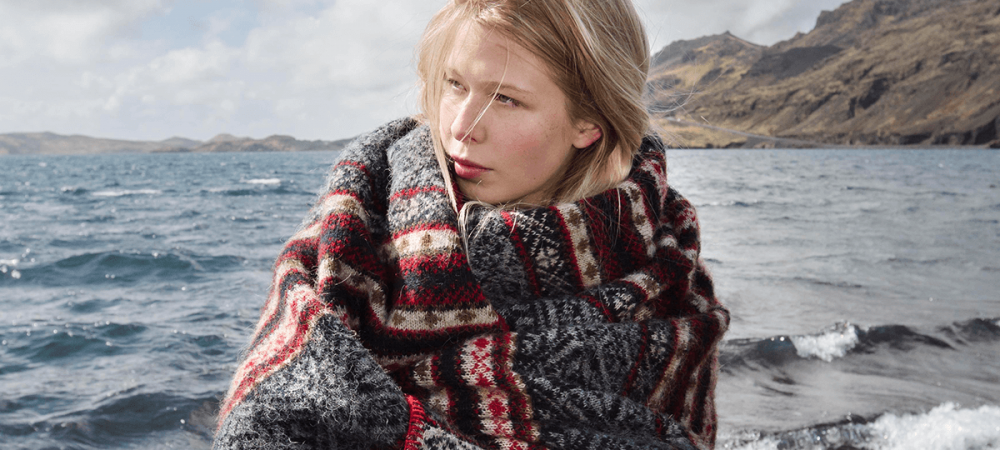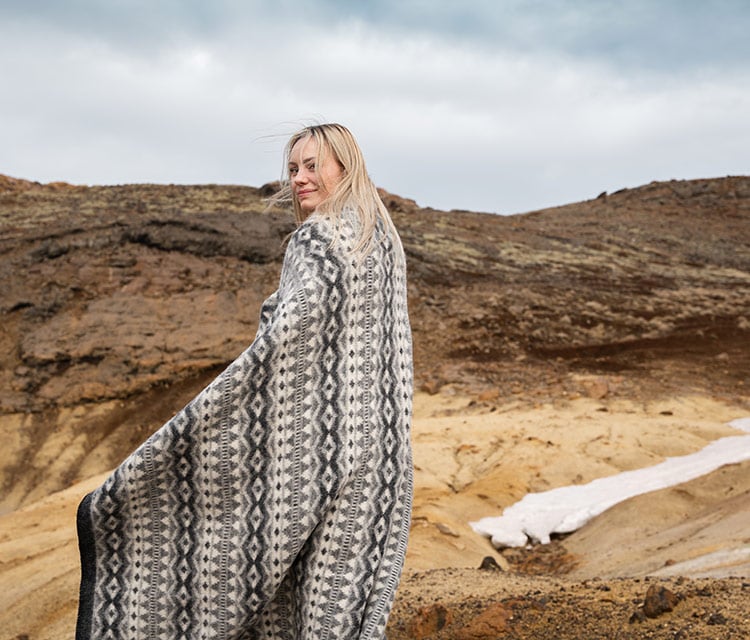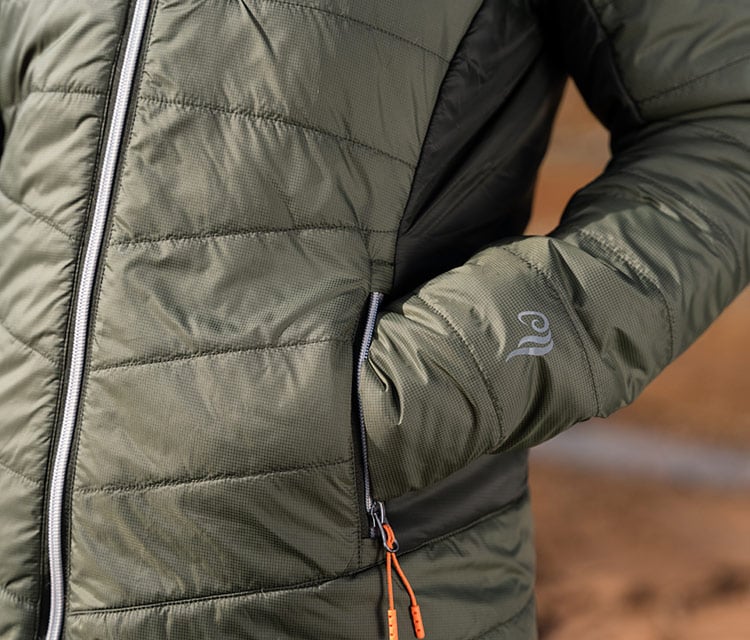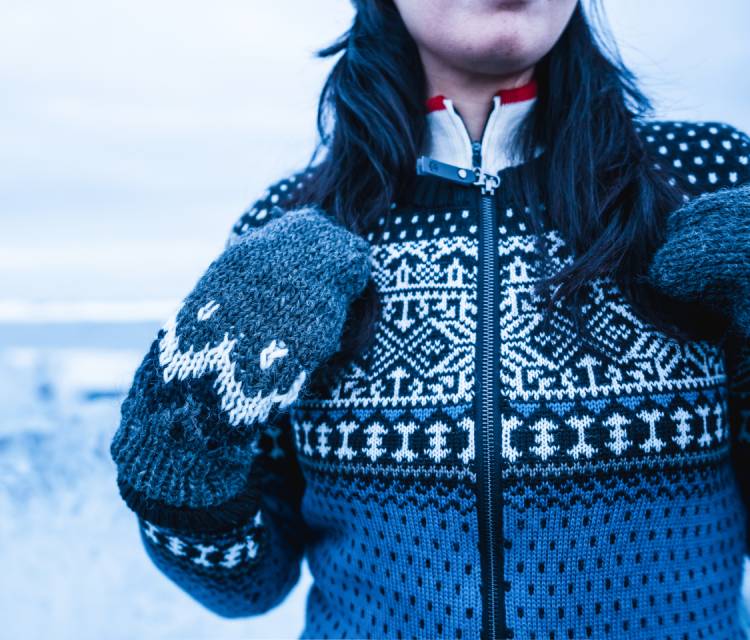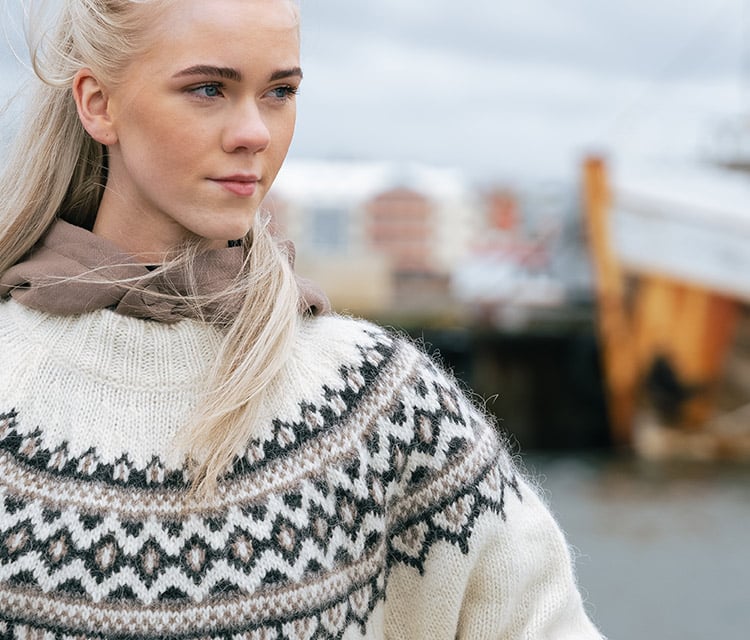Icelandic wool sweaters are valued for their beautiful designs and color combinations, and for the protection they provide against the elements. Not only do they have fun color patterns, but the wool fibers offer remarkable protection against both cold and wet weather. No piece of clothing better combines stylishness and craftsmanship with functionality and comfort. The key to the Icelandic sweater’s ability to protect the body is in the particular protective qualities of Icelandic wool, cultivated by generations of Icelandic farmers from a hardy breed of sheep in a challenging landscape under harsh climate conditions.
Icelandic wool has a history that dates back to the earliest settlers who came to the island from Norway as early as the 9th century AD. These pioneers brought sheep with them to their new home to use as sources of wool, fur, and food. Located in the Atlantic Ocean just below the Arctic Circle, Iceland is an island that faces challenging weather conditions. The sheep range free in the highlands during the summer months until the weather becomes too harsh. In an annual event known as the réttir, farmers and their families herd the sheep down the valleys for sheering season. Because Iceland is a remote island, its sheep have not mixed with other breeds for centuries—more than a millennium in fact. The combination of challenging environment and isolation from other breeds has resulted in a hardy stock of sheep whose wool has distinct qualities suited to Iceland’s weather conditions.
The wool of Icelandic sheep is unique in that it contains two different types of hair that serve as a natural barrier from wet and cold weather. The outer layer is composed of coarse, long hair known in Icelandic as tog. The tough and fleecy tog is a water-resistant layer. Underneath the tog, there is a layer of short hair, known in Icelandic as þel. The softer þel layer keeps the sheep snug and warm even in the worst of weather conditions. If any moisture escapes through the water-resistant tog layer, the þel is able to keep the animal warm even when wet. These dual layers, when combined in knitted clothing, provide the same kind of protection for the human body, even in rain or snow.
Icelandic Wool Top Roving
Historically, wool production in Iceland was done by hand, with workers separating the tog and þel fibers into separate types of yarn. With industrialization and the introduction of machines to facilitate wool production, the yarn-making processes changed. However, no machine was able to separate the tog and þel fibers. Thus, the Icelandic wool called lopi is the modern development, which combines both the water-resistant tog fibers and the warm, snug þel fibers all in one yarn. The strong outer fibers hold the softer, warmer fibers together, and the result is an ideal defence against cold and wet weather. This makes Icelandic sweaters, hats, gloves, and other accessories the ideal clothing for winter weather.
Another unique feature of Icelandic wool is due to the color of our sheep. More diverse than other breeds, Icelandic sheep can have fleeces of white, black, and varying shades of brown, reddish brown, or grey. The variety of colors in our sheep allow for a wider variety of natural wool colors. ICEWEAR’s range of wool sweaters includes those made with wool of natural colors as well as some dyed wools.
The unique protective qualities of Icelandic wool, along with natural colors and beautiful designs, are what make Icelandic wool a uniquely beautiful and functional choice for knitwear. Looking good and feeling protected, that’s the ultimate in dressing well.

